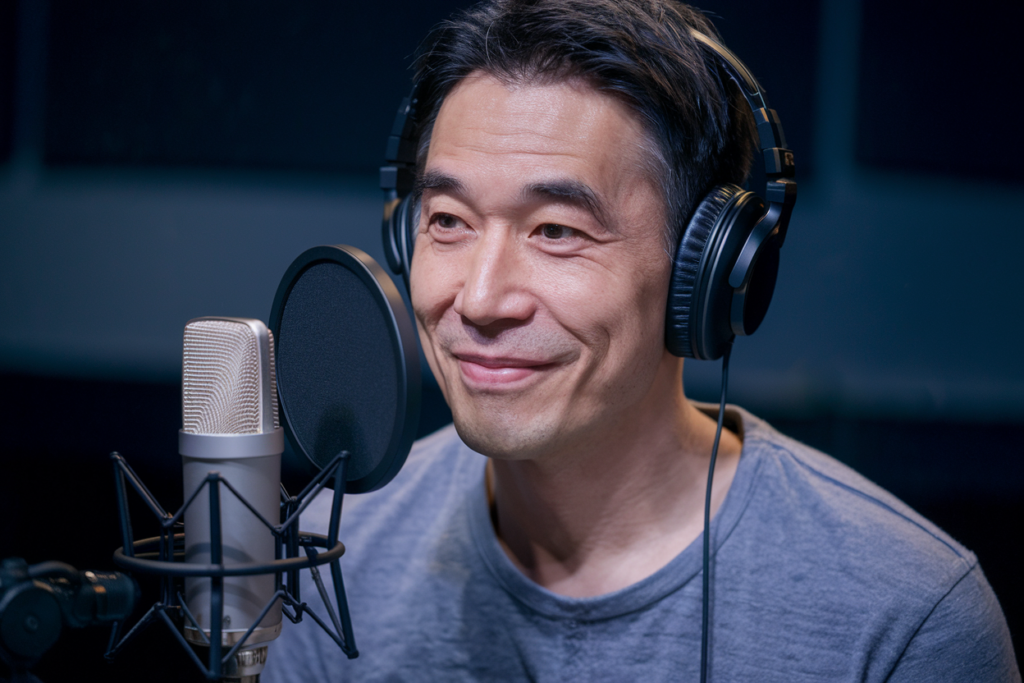Key Takeaways
- Standard Japanese is Practical: It serves as the primary form of communication in Japan, widely understood in media, education, and business settings.
- Regional Dialects Offer Unique Insights: Each region has its own dialects that reflect local culture and history, providing a deeper connection to specific communities.
- Consider Your Learning Goals: If you aim for broad communication or professional opportunities like voice acting, standard Japanese is essential; regional dialects are better for localized interactions.
- Understand Cultural Context: Language usage varies greatly across different cultural contexts; mastering standard Japanese allows for effective engagement in diverse environments while regional dialects resonate within their local communities.
- Evaluate Pros and Cons: Weigh the advantages of widespread understanding and formal suitability of standard Japanese against the cultural richness and unique expressions found in regional dialects to make an informed decision.
Ever wondered whether to dive into standard or regional Japanese? Choosing the right path can feel overwhelming, especially with so many dialects and nuances.
Standard Japanese is widely spoken and understood, making it a solid choice for most learners. But what if you’re drawn to a specific region’s culture or plan to live there? Regional Japanese offers unique expressions and sounds that can deepen your connection to local communities.
Understanding Standard Japanese
Standard Japanese serves as the primary form of communication in Japan. It is widely recognized and used across various media, education, and business settings. This uniformity makes it a practical choice for learners.
Characteristics of Standard Japanese
Standard Japanese features clear pronunciation and a consistent grammar structure. It’s based on the Tokyo dialect, making it accessible to most speakers. Vocabulary tends to be straightforward, avoiding regional slang or idiomatic expressions that can confuse non-native speakers. You’ll find that this clarity helps in understanding formal contexts like news broadcasts or educational materials.
Regions Where Standard Japanese is Predominant
Standard Japanese predominates throughout urban areas, particularly in Tokyo and other major cities like Osaka and Nagoya. These regions host numerous schools and businesses where standard forms are taught and expected. In these environments, using standard Japanese facilitates effective communication across diverse populations. While regional dialects exist, they often blend into the standard language during formal interactions.
Choosing between standard and regional variants affects your learning experience significantly. By mastering standard Japanese first, you create a solid foundation for exploring regional nuances later on if desired.
Exploring Regional Japanese
Regional Japanese offers a rich tapestry of dialects that reflect the diverse cultures and histories found across Japan. Understanding these regional nuances can deepen your appreciation for the language and strengthen connections with local speakers.
Key Features of Regional Dialects
Regional dialects in Japan, known as “hōgen,” possess distinct characteristics that set them apart from standard Japanese. These features include:
- Pronunciation Variations: Each region has unique sounds, making some dialects sound very different from standard Japanese.
- Vocabulary Differences: Specific terms or phrases used locally may not be understood outside their regions. For example, people in Osaka might use words unfamiliar to those in Tokyo.
- Grammar Distinctions: Some dialects employ alternative grammatical structures, which can change sentence formation entirely.
- Cultural Expressions: Local customs and traditions often influence how language is used, leading to expressions that resonate deeply within specific communities.
These elements contribute to the charm of regional languages while posing challenges for learners who start with standard Japanese.
Popular Regional Dialects in Japan
Several regional dialects capture attention due to their uniqueness and cultural significance. Here are a few notable ones:
- Kansai Dialect (Kansai-ben): Spoken around Osaka and Kyoto, this dialect is famous for its lively intonation and humor. It’s essential for anyone wanting to connect with Kansai’s vibrant culture.
- Hokkaido Dialect (Do-bun): This northern dialect reflects the influences of indigenous Ainu culture along with settlers from other regions.
- Okinawan Dialect (Uchināguchi): Unique among all dialects, Uchināguchi showcases Okinawa’s distinct history and linguistic roots separate from mainland Japan.
- Tohoku Dialect (Tohoku-ben): Known for its softer pronunciation, Tohoku-ben also includes unique vocabulary influenced by farming life.
Learning about these regional variations enriches your understanding of Japan’s linguistic landscape while fostering deeper connections with its people.
Factors to Consider When Deciding
When deciding between standard and regional Japanese, several factors come into play. Understanding these elements helps guide your choice to best meet your needs.
Cultural Context and Usage
Cultural context significantly influences language usage. Standard Japanese is prevalent in media, education, and business across Japan, ensuring effective communication in diverse settings. If you’re planning to engage with broader audiences or pursue voiceover work that involves a national scope, mastering standard Japanese provides that solid foundation. Regional dialects carry unique expressions and cultural nuances that resonate deeply within local communities. If you aim to connect authentically with specific locales or target niche markets for voiceovers, embracing regional dialects can enhance your relatability as a voice artist.
Personal Learning Goals
Your personal learning goals shape the direction of your language journey. If you’re interested in pursuing opportunities as a voice actor working on national projects, focusing on standard Japanese aligns well with those aspirations. It equips you with clear pronunciation and consistent grammar essential for professional communication. On the other hand, if your heart leans toward immersing yourself in local cultures or engaging directly with community members through creative projects like localized voiceovers, exploring regional Japanese fulfills that desire while adding depth to your skill set.
Evaluating both cultural implications and personal aspirations leads to informed decisions about whether standard or regional Japanese fits best into your plans for language acquisition or voiceover endeavors.
Pros and Cons of Each Option
Deciding between standard Japanese and regional Japanese involves weighing their respective advantages and disadvantages. Understanding these factors helps you make an informed choice that aligns with your goals.
Advantages of Standard Japanese
Standard Japanese, based on the Tokyo dialect, offers several benefits.
- Widespread Understanding: It’s spoken throughout Japan, ensuring effective communication across diverse settings—be it business or social interactions.
- Media Presence: Most TV shows, films, and news programs use standard Japanese. This exposure enhances listening skills and comprehension for learners.
- Formal Context Suitability: It avoids regional slang, making it ideal for formal situations like presentations or professional meetings.
- Foundation for Learning: Mastering standard Japanese provides a solid base to explore regional dialects later if you choose to delve into local nuances.
Advantages of Regional Japanese
Regional Japanese adds unique flavor to your language learning experience.
- Cultural Connection: Engaging with specific dialects like Kansai-ben or Tohoku-ben deepens your understanding of local cultures and traditions.
- Unique Expressions: Dialects often feature distinctive vocabulary or phrases that reflect local identities—these can enrich conversations with native speakers.
- Relatability in Local Contexts: Using a regional dialect can enhance relatability when interacting with locals, fostering stronger connections in specific areas.
- Personalized Learning Experience: If you’re drawn to particular regions or their cultural aspects, mastering a regional dialect makes your language journey more enjoyable and fulfilling.
Evaluating these pros and cons enables you to align your language choices with personal aspirations, whether that’s pursuing voiceover opportunities or connecting authentically within specific communities in Japan.
Conclusion
Choosing between standard and regional Japanese ultimately comes down to your personal goals and interests. If you’re looking for widespread communication skills that can be applied in formal settings or across various regions, standard Japanese is the way to go. It lays a strong foundation for understanding the language as a whole.
On the flip side, if you want to dive deeper into Japan’s rich cultural tapestry, exploring regional dialects can offer unique insights and connections to specific locales. Balancing these factors will help you make an informed decision that aligns with your aspirations in language learning and cultural engagement. Whatever path you choose, each offers its own rewards on your journey through the Japanese language.
Frequently Asked Questions
What is standard Japanese?
Standard Japanese, based on the Tokyo dialect, is a widely spoken and understood form of the language. It features clear pronunciation and consistent grammar, making it accessible for communication in various settings like media, education, and business.
Why should I learn standard Japanese first?
Learning standard Japanese provides a solid foundation for effective communication. It avoids regional slang and facilitates understanding across Japan’s urban areas, enabling you to engage with broader audiences before exploring regional nuances.
What are regional Japanese dialects?
Regional Japanese dialects, known as “hōgen,” reflect Japan’s diverse cultures and histories. They feature unique pronunciation, vocabulary differences, and cultural expressions that enrich your overall experience of the language.
Can learning regional Japanese enhance my cultural connections?
Yes! Learning regional dialects can deepen your understanding of local cultures and foster authentic relationships within specific communities. This personalized approach allows you to relate better to locals in those areas.
What factors should I consider when choosing between standard and regional Japanese?
Consider your personal learning goals and context. Standard Japanese is essential for formal settings or national opportunities while regional dialects may be more beneficial if you wish to connect with specific locales or communities authentically.
Are there pros and cons to learning each type of Japanese?
Absolutely! Standard Japanese offers widespread understanding and suitability for formal contexts. Regional dialects provide unique expressions but may limit comprehension outside their regions. Weighing these factors helps align your choices with personal aspirations in language acquisition.







